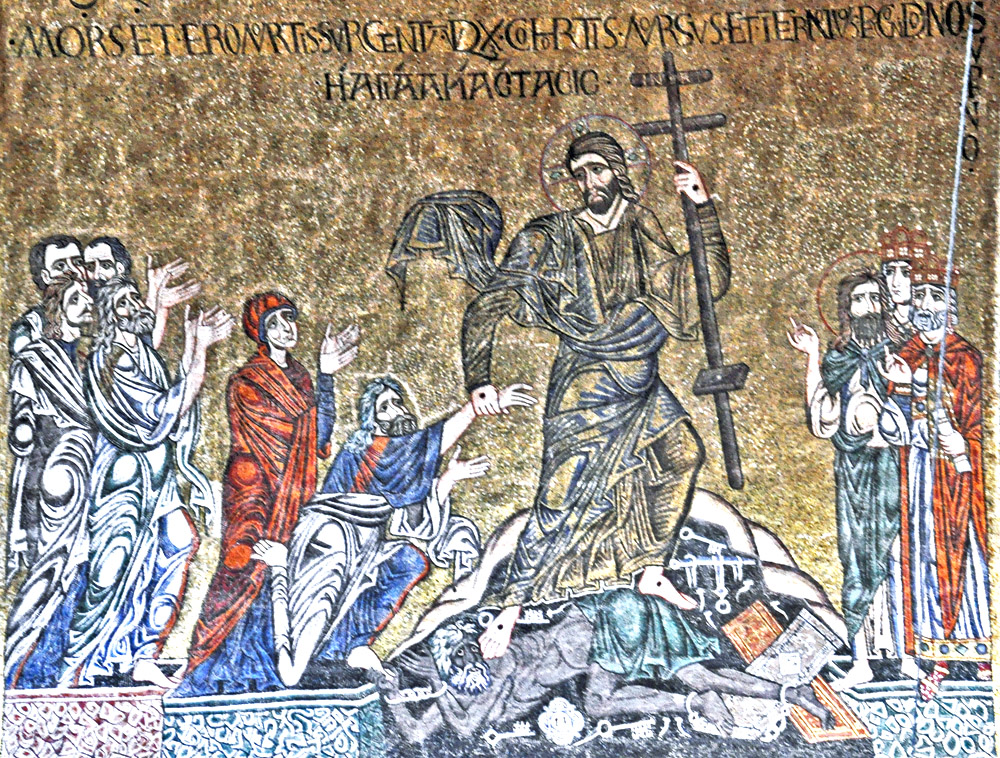The Anastasis

13th century
Mosaic
St. Mark's Basilica, Venice
Christ's feet and hands bear the marks of the crucifixion nails and he carries the cross by which he has earned salvation for the prophets and patriarchs shown her, starting with Adam, whom he takes by the wrist. Eve waits behind, and behind her are a variety of Old Testament personages. On the right are the two kings David and Solomon (in crowns) and St. John the Baptist (haloed and pointing to Christ).
In the chasm beneath Christ's feet is a remarkable rendition of all he has conquered: the devil himself, now chained hand and foot; the gates of Hell; and a collection of keys. The keys most likely refer to Revelation 1:17-18, where Christ tells John, "I am the First and the Last, and alive and was dead, and have the keys of death and of hell."
The Latin inscription reads, MORS ET ERO MORTIS SURGENTUM DUXQUE COHORTIS MORSUS ET INFERNO VOS REGNO DONO SUPERNO, "And I will be the death [mors] of Death and leader of this surging cohort and the victor [morsus] over Hell, and I will give you the kingdom above." The play on mors ("death") and morsus (literally, "bite" or "morsel") is found first in the Latin of Hosea 13:14, "O death, I will be thy death; O hell, I will be thy bite." Augustine cites that verse in the Hypomnesticon (I, iv), suggesting that "Death [mors] got that name because in Paradise Adam was killed by a bite [morsu] of something poisoned by the…devil" (Oeuvres Complètes, XXXII, 647). After Augustine, the pun became a commonplace
in medieval poetry. (See examples in Walpole, 168, and Tischler, IV, 12.)
Beneath the Latin inscription are the Greek words Η ΑΓΙΑ ΑΝΑCΤΑCΙC, "the holy Resurrection."
View this image in full resolution.
Read more about images of the Anastasis.
Photographed at the basilica by Richard Stracke, shared under Attribution-NonCommercial-ShareAlike license.